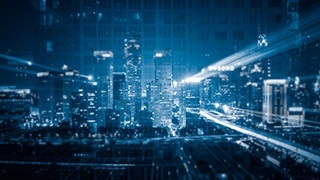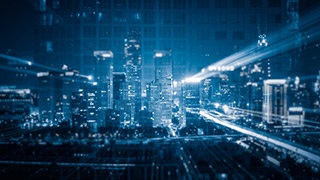
 The movie, Blade Runner 2049, directed by Denis Villeneuve, is a worthy sequel to the 1982 original, Blade Runner, set in 2019 Los Angeles. In the world of brands the original was also known as the product placement curse because many of the brands in the film encountered business problems soon after its release, and some no longer exist.
The movie, Blade Runner 2049, directed by Denis Villeneuve, is a worthy sequel to the 1982 original, Blade Runner, set in 2019 Los Angeles. In the world of brands the original was also known as the product placement curse because many of the brands in the film encountered business problems soon after its release, and some no longer exist.
The sequel certainly provides an interesting vision for marketing and brand communications in the not-so-far-off future and raises questions about what marketing might look like in 2049, explains Jane Ostler, managing director, media and digital in Kantar Millward Brown.
Here are a few observations for marketers:
1. SKYSCRAPER AS BILLBOARD:
Everyone is flying around in autonomous cars 30 storeys above ground in a permanently grey and rainy world. Corporate logos are lit up on the sides of buildings becoming more prominent and significant. We see the lights of Sony, Atari and Diageo, and the late-departed Pan Am and RCA among others as we navigate our way through the urban dystopia. What can a logo on its own signify? And what efforts have those brands made to raise awareness of their products or sub-brands, for consumers to make the desired associations?
2. PRODUCT PLACEMENT:
Harrison Ford in the role of Rick Deckard drinks from a special edition square bottle of Jonnie Walker Black Label scotch. He also drank Johnnie Walker in the 1982 version and the label was prominently displayed. This is a classic product placement play. But do marketers forget how important packaging is as a recognisable brand asset? And in categories where own label brands can produce similar-looking packaging, how distinctive does the packaging need to be?
3. FLYING VEHICLES:
An old clunky metal police vehicle driven around by K (Ryan Gosling), an LAPD officer, is clearly branded as a Peugeot. It’s certainly not the slick shiny oh-so-clean vision of a concept car we usually see from automotive manufacturers in movies. And it’s not quite autonomous as Gosling flies it around. Does this position Peugeot as future-facing and fearless? Or have they taken a massive risk? The Peugeot brand recently re-entered the US with a ridesharing service in Los Angeles. So, is the brand placement a flight of fancy, or a clever positioning, signifying plans to sell cars in the US again?
4. PERSONAL MEDIA CHOICE:
A holographic Elvis Presley plays on a stage in the abandoned Las Vegas casino where Harrison Ford is living and hiding out. Does this represent one’s music choice on Spotify taken to its logical extreme? Artists can appear for you and give a personal performance, even if they’re dead. Squeezing the most out of the royalties perhaps? Does all media become personal, driven by an algorithm?
5. ARTIFICIAL INTELLIGENCE AND ANTHROPOMORPHISATION
The movie features a character (Joi) who’s a hologram operating system girlfriend who rather creepily attends to Ryan Gosling’s every whim. Is Joi what Alexa, Siri and Cortana become, in 3D human-like form? Watch the 2013 Spike Jonze film, ‘Her’ staring Joaquin Phoenix and Scarlett Johansson if you want to see how that story plays out.
So in 2049 it looks like marketing is distilled down to simple and recognisable touchpoints (logo, packaging, etc.), to create preference. Meanwhile, service brands like Joi are powered by an algorithm, delivering a personal service for each ‘customer’. Interestingly, it’s a rather lonely future – there’s no social element in the director’s vision of 2049 at all…
Source:Kantar Millward Brown
